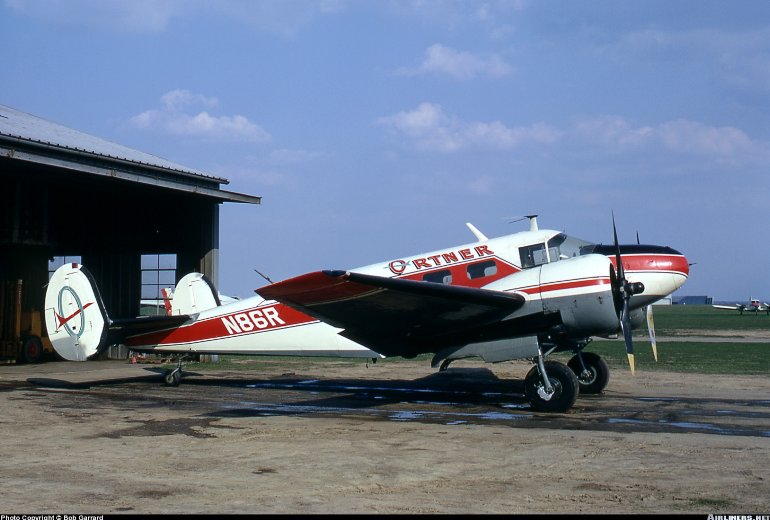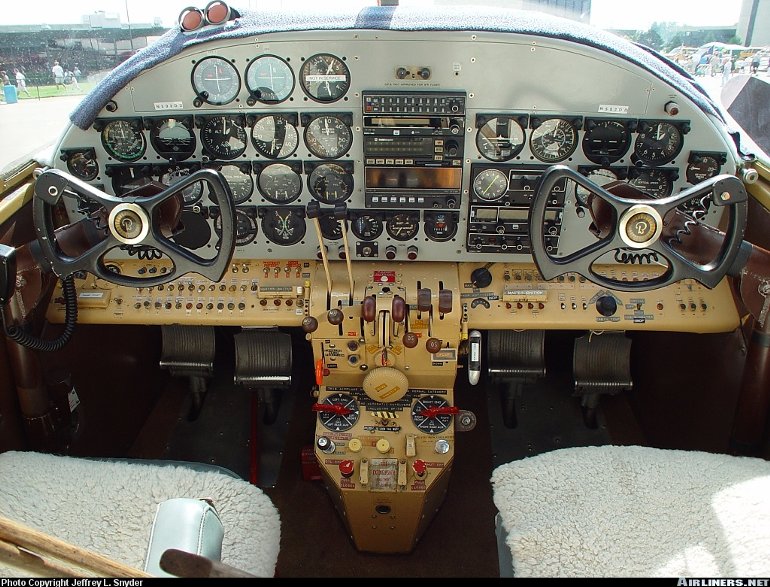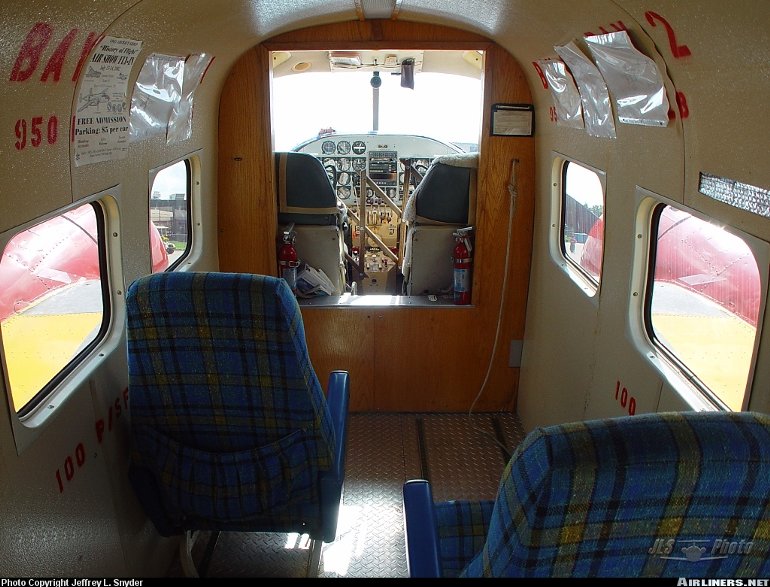Aircraft Technical Data
Beech 18



| Details | |
| Country of Origin | United States of America |
| Type | Light utility transport |
| History | Beech's most successful airliner, more than 9000 Beech 18s were built over an uninterrupted three decade long production run, and while many of those were built against wartime military contracts, vast numbers went on to see civil service. The prototype Beech 18 first flew on January 15 1937. The design followed conventional design wisdom at the time, including twin radial engines, metal construction and taildragger undercarriage, while less common were the twin tail fins. Early production aircraft were either powered by two 225kW (300hp) Jacobs L6s or 260kW (350hp) Wright R760Es. The Pratt & Whitney Wasp Junior became the definitive engine from the prewar C18S onwards. The demands of World War 2 significantly boosted the already successful Beech 18's fortunes, with 5000 built as C45s for the US Army Air Force for use as transports and multi engine pilot trainers. Postwar, large numbers of C45s entered civil service, while Beech resumed production of the C18S. Progressive development resulted in the D18S of 1946, the Continental powered D18C of 1947, the E18S of 1954, the G18S from 1959 and the H18 with optional tricycle undercarriage from 1962. Beech production ceased in 1969. The Beech 18 has also been the subject of numerous conversions. Volpar has offered tricycle undercarriage conversions, conversions with TPE331 turboprops and stretched and TPE331 powered conversions (described in the specifications above). Hamilton meanwhile converted Beech 18s as Westwinds with Pratt & Whitney Canada PT6 turboprops and also offered stretches. |
| Powerplants | Super H18 - Two 335kW (450hp) Pratt & Whitney R985AN14B Wasp Junior nine cylinder radial piston engines driving two blade constant speed propeller. Turboliner - Two 525kW (705ehp) AiResearch (Garrett) TPE3311101B turboprops driving three blade constant speed Hartzell propellers. |
| Performance | Super H18 - Max cruising speed 354km/h (191kt), economical cruising speed 298km/h (160kt). Initial rate of climb 1400ft/min. Service ceiling 21,400ft. Range with max fuel 2460km (1330nm). Turboliner - Max speed 450km/h (243kt), economical cruising speed 412km/h (222kt). Initial rate of climb 1520ft/min. Service ceiling 24,000ft. Range with max fuel and reserves 3340km (1800nm), range with max payload and reserves 555km (300nm). |
| Weights | Super H18 - Empty equipped 2650kg (5845lb), max takeoff 4490kg (9900lb). Turboliner - Empty (airliner) 2993kg (6600lb), max takeoff 5215kg (11,500lb). |
| Dimensions | Super H18 - Wing span 15.14m (49ft 8in), length 10.70m (35ft 3in), height 2.84m (9ft 4in). Wing area 33.5m2 (360.7sq ft). Turboliner - Wing span 14.02m (46ft 0in), length 13.47m (44ft 3in), height 2.92m (9ft 7in). Wing area 34.8m2 (374sq ft). |
| Capacity | Most Beech 18s seat two crew and seven to nine passengers in main cabin. Volpar Turboliner conversion seats up to 15. |
| Production | Over 9000 Beech 18s of all models built between 1937 and 1969, of which 2000 were built postwar. Wartime military production accounts for majority of Beech 18s built (approx 5000). |
| Related Links | Beech 18 |
The backbone of this section is from the The International Directory of Civil Aircraft by Gerard Frawley and used with permission. To get your own copy of the book click here. |
|








